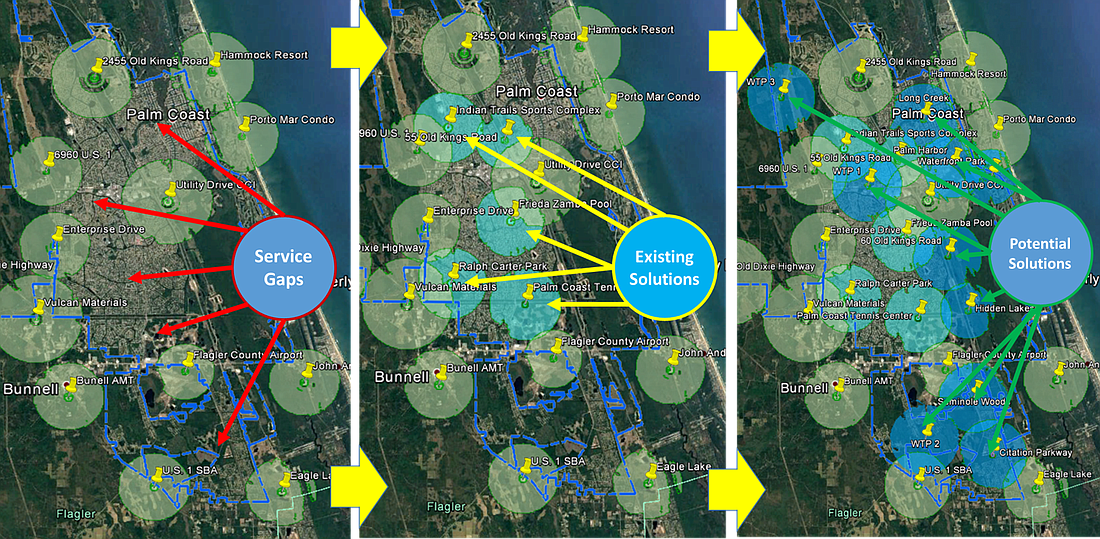- April 18, 2024
-
-
Loading

Loading

Palm Coast may allow as many as 10 new wireless communications towers at 29 potential sites to plug its wireless service dead zones.
The city began seeking expert advice about its wireless problems in November 2015, and, in May 2017, contracted with Diamond Communications to determine where its service gaps are and how to best fill them.
“This became a very large project, and it was very technical in nature, and that’s where Diamond’s expertise comes in as far as wireless industry,” City Manger Jim Landon said. “This is really part of getting City Council’s buy-in and approval.”
Staff from Diamond presented a proposed “wireless master plan” for the city before the City Council at its Jan. 9 workshop.
The plan analyzed both coverage and potential real estate issues associated with adding new towers, and created new coverage maps based on various possible tower placements. Diamond suggested the use of “monopole” towers instead of lattice towers, which are more obtrusive.
Monopoles, according to Diamond, would meet the needs of the area’s major service providers while requiring the lowest number of additional wireless tower sites.
But fixing the city’s wireless problems will be in part a matter of fixing the city’s ordinances, according to the presentation.
“Staff collectively determined that the city’s current treatment of wireless development in the ordinance presents a significant obstacle to wireless carriers trying to improve their network quality in the city,” Diamond’s presentation said. “Given constraints on carrier budgets and the widespread need for additional cellular sites, an ordinance with onerous and costly requirements and highly uncertain outcomes can encourage carriers to focus their priorities and resources on alternative areas with lower resistance.”
Of the 29 sites on which the city could place 10 new towers to plug its service gaps, all are on public land, and 24 are on city land.
The city, Diamond suggested, could adjust its ordinances so that if a carrier wants to place up to a 150-foot monopole tower on one of those parcels, the carrier won’t have to go through the lengthy process of proving the suitability of the site to the City Council: Instead, it could go straight to a streamlined administrative review process.
The City Council would still have to sign off on a lease of the land, but the process would be simpler and less costly for carriers.
Diamond, meanwhile, will market for potential carriers to entice them to expand their service in Palm Coast, either by adding their antennas to existing towers or building new ones, according to the presentation.